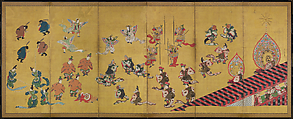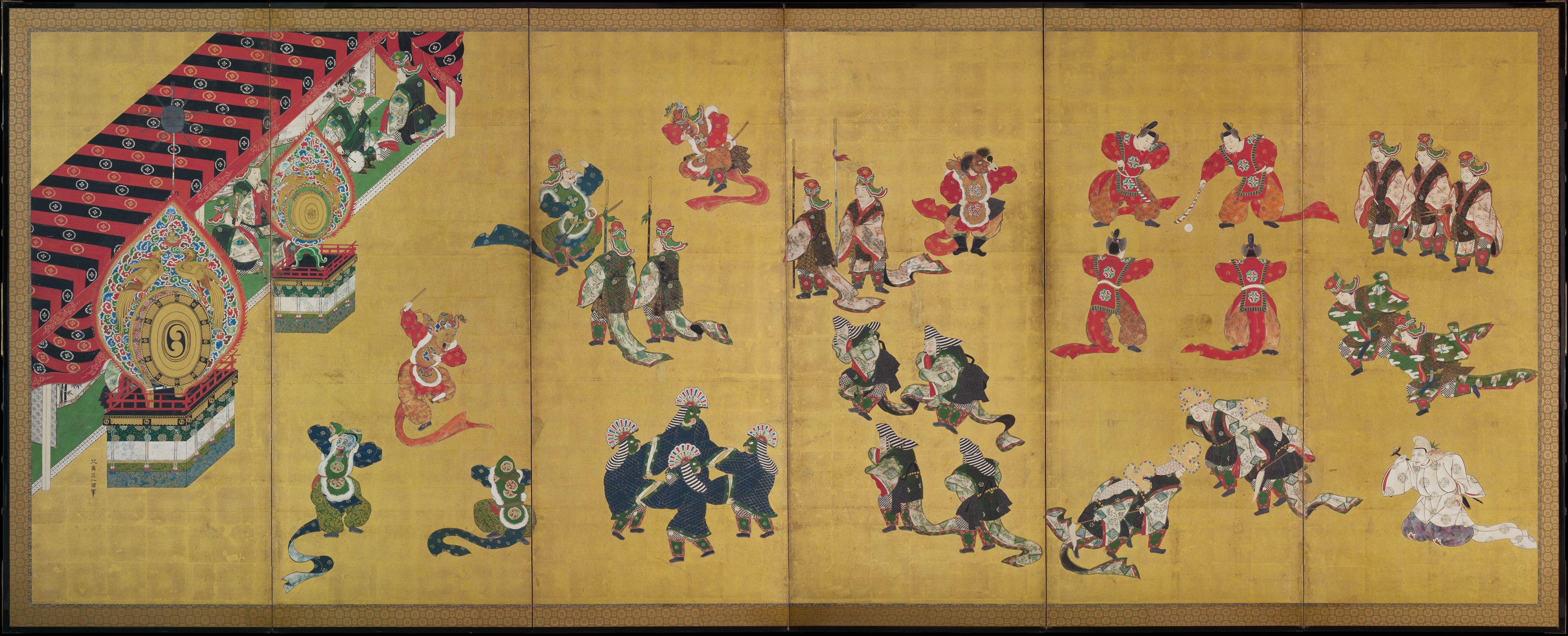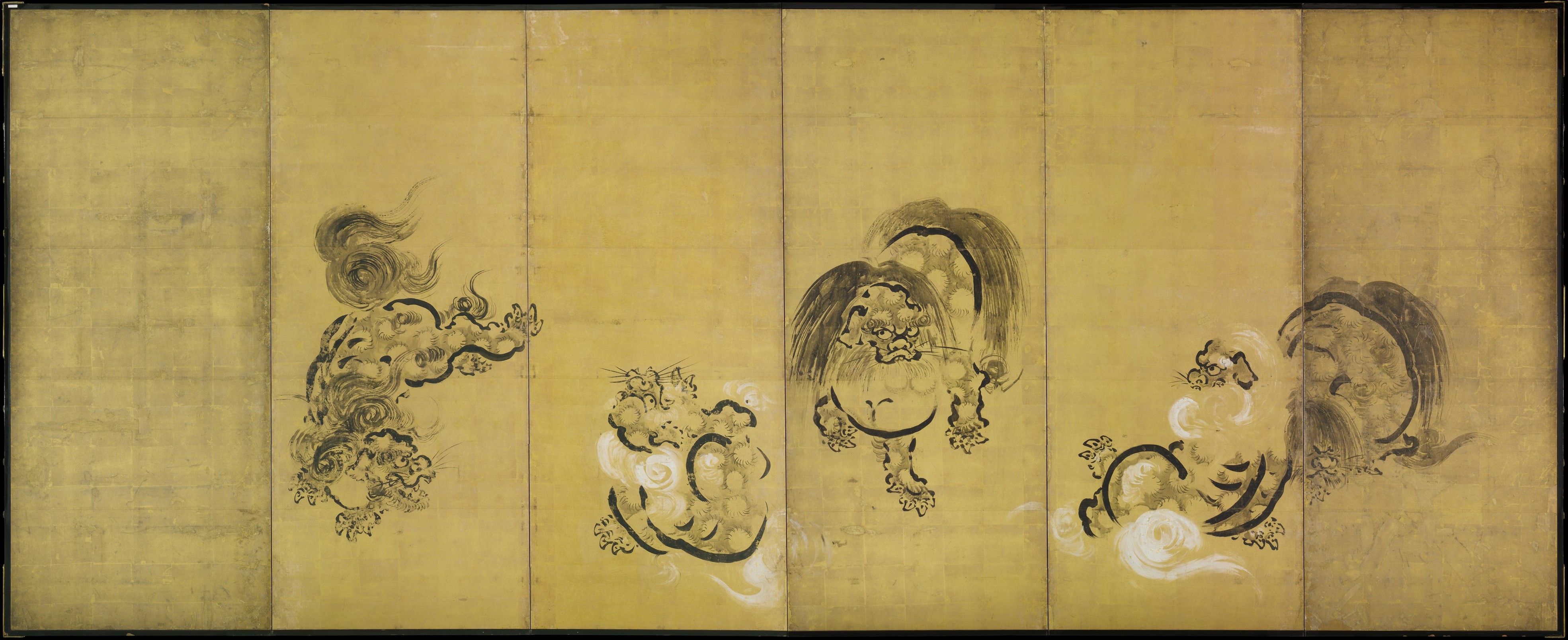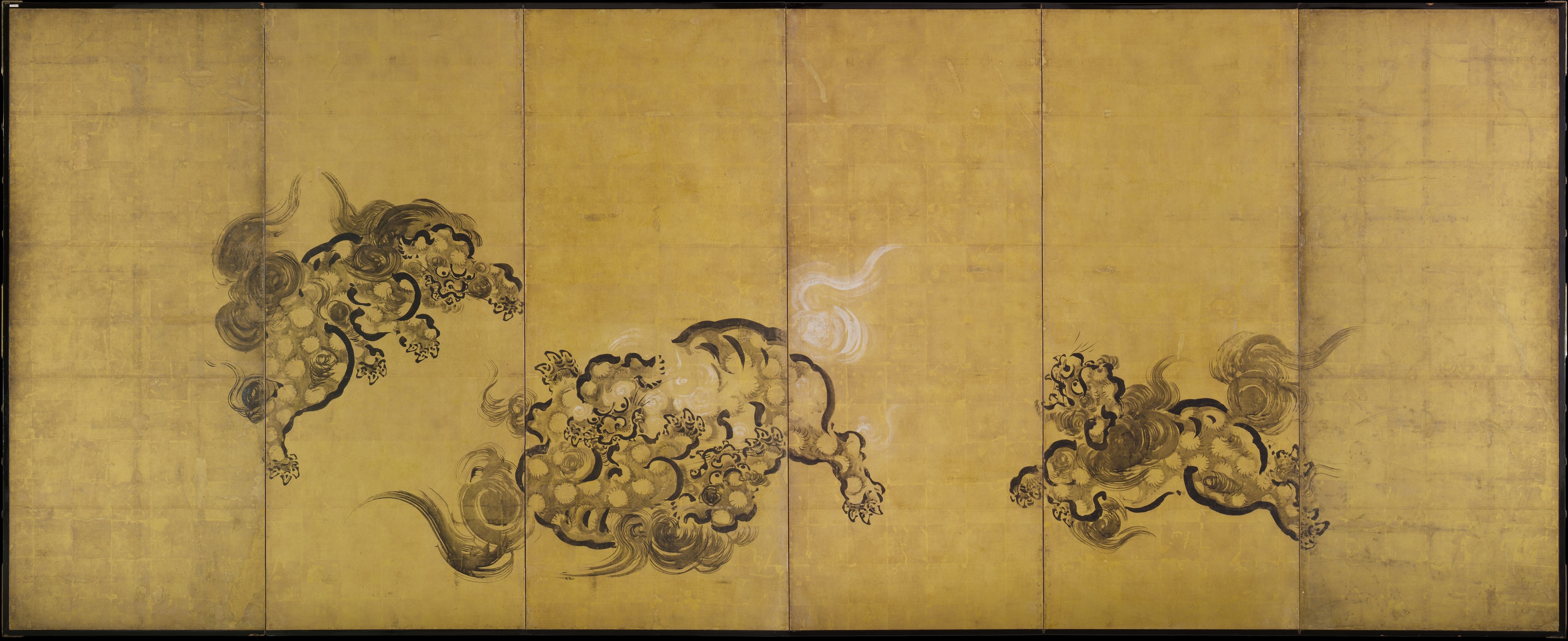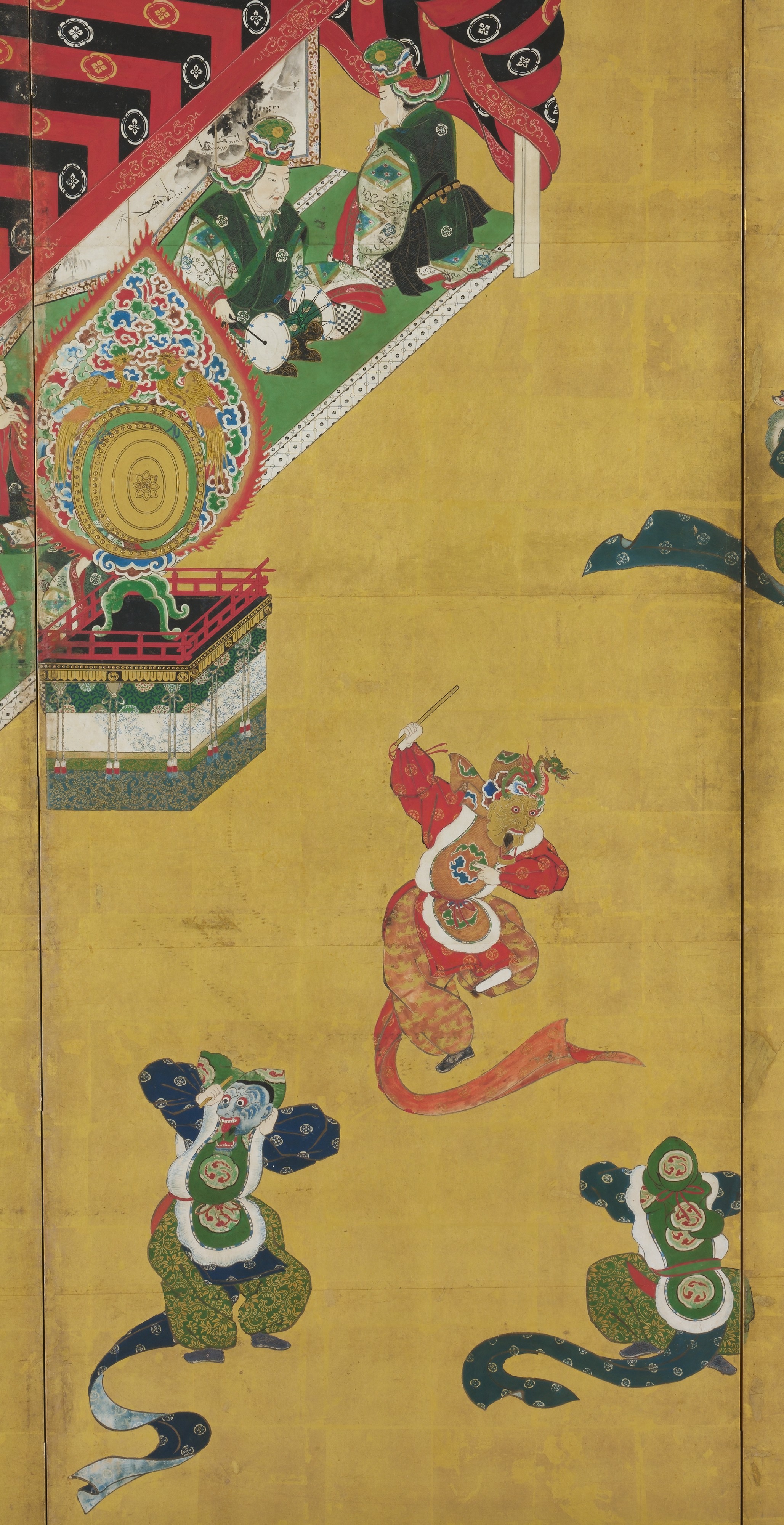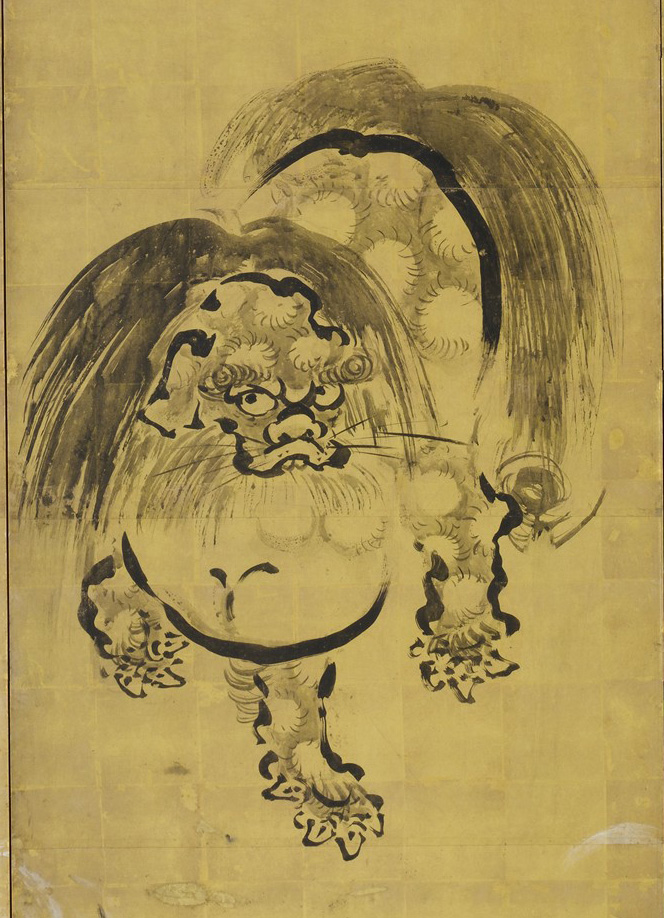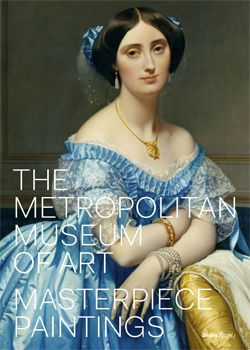Bugaku Dances (front); Chinese Lions (reverse)
Hanabusa Itchō Japanese
Not on view
Chinese Lions (Karajishi)
Across the gold expanse of this pair of screens, nine Chinese lions (karajishi) gambol and playfully wrestle. Chinese lions were auspicious symbols of power in East Asian visual culture, and through the Momoyama and Edo periods times were frequently found on screens or sliding-door panels in elite samurai residences, castles, or temples. The dynamic brushwork, whether the jagged curves in dark ink, or the swirls of tails and in grayish tones, reveal the artist Hanabusa Itchō at the height of his artistic powers in his later years—after his return from exile in 1709 (apparently for disreputable behavior with samurai ladies). On the reverse side is a colorful depiction of bugaku (court dance) performances, in a hyper-meticulous but very traditional mode. This set of screens, revealing two sides of Itchō’s stylistic capabilities, is said to be the artist’s most expensive commission, possibly for one of his top patrons in 1713.
Bugaku Dances
Illustrated scrolls recording the costumes and gestures of ancient court dances inspired the popular Edo theme drawn from the colorful and exotic bugaku repertory—one of the many appropriations of classic imagery that provided a rich source for the bold design innovations of late seventeenth- and early eighteenth-century Japanese artists. In this work, painted in Itchō’s later years, the figures seem to dance within and against the gold surface.
Due to rights restrictions, this image cannot be enlarged, viewed at full screen, or downloaded.
This artwork is meant to be viewed from right to left. Scroll left to view more.
